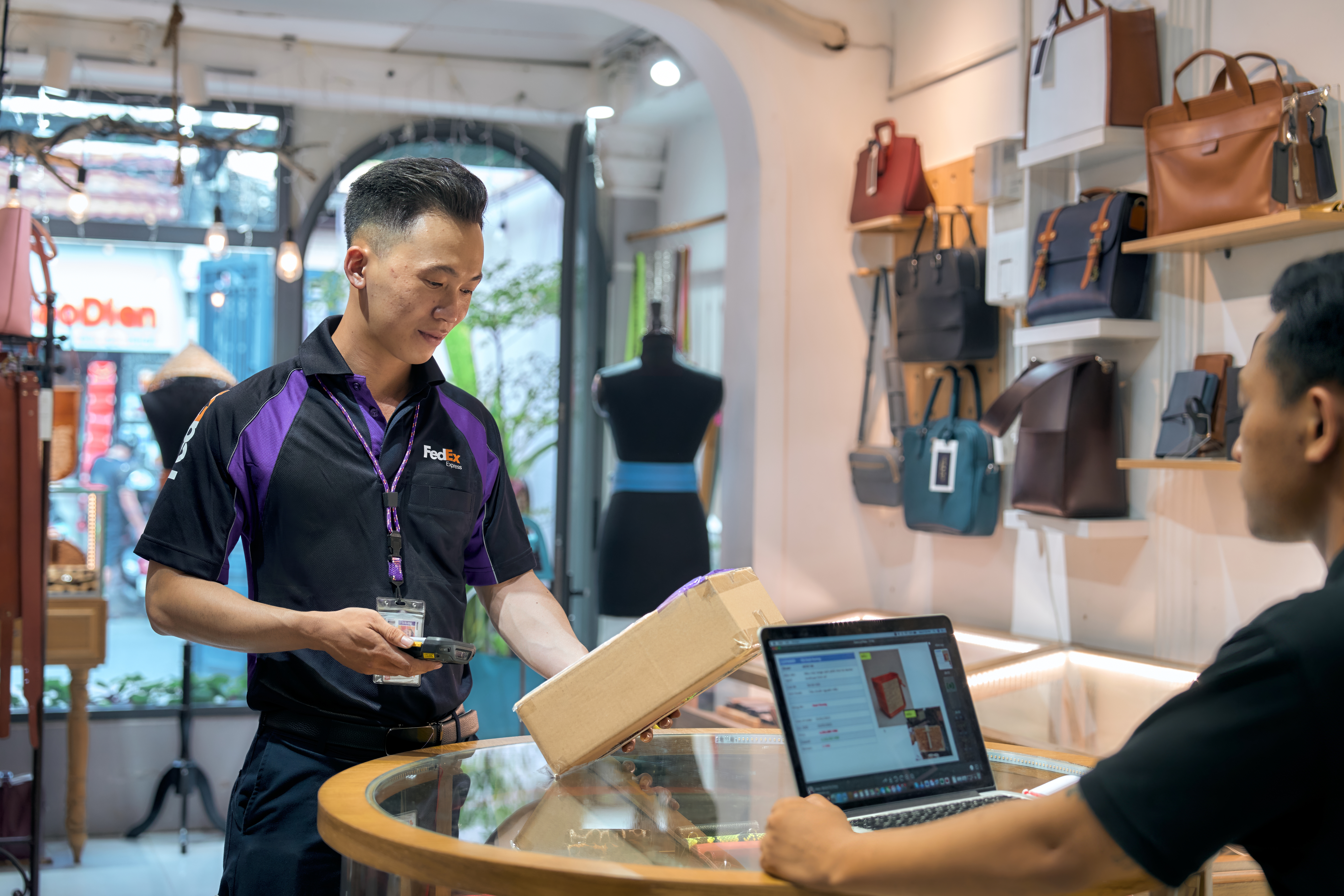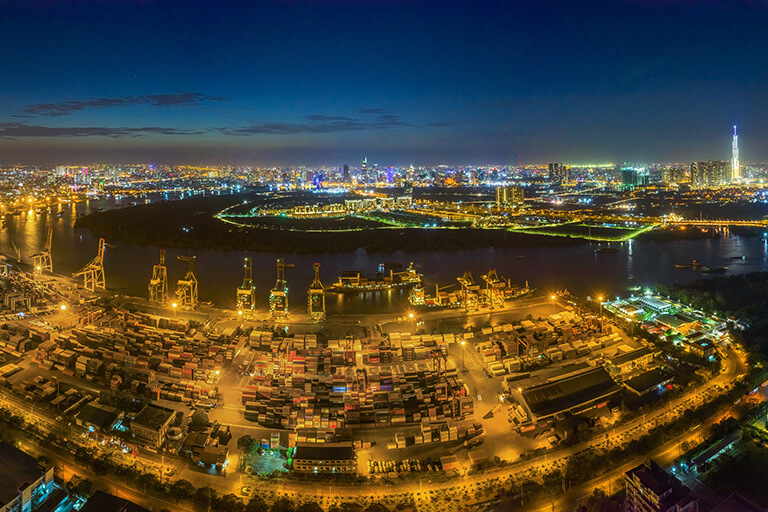Southeast Asia: The Next Manufacturing Powerhouse?
Vietnam is among the global production hubs on the rise in Southeast Asia, where increased shipping capacity and faster transit times are helping local businesses grow cross-border trade.
- Southeast Asia is becoming a global hub for manufacturing. Vietnam, in particular, offers advantages such as strong trade links, high growth in its tech and textile industries, and a thriving SME landscape.
- If you’re a small business producing, exporting, or importing in or out of Southeast Asia, you can benefit from our enhanced flight service from Vietnam, which shortens shipping times to major Asian and European markets by one day.
- To remain future-proof, companies must rethink single-source manufacturing, and diversify to include Southeast Asia in their future supply chain strategy.
Southeast Asia has shown remarkable sustained growth in recent years, defying headwinds to emerge as a global powerhouse.
For decades, export manufacturing has played a critical role in powering Asia’s Tiger Economies. And Southeast Asia’s manufacturing hubs continue to grow and diversify with higher-value goods and services.
All over the world, companies are diversifying supply chains across the SEA region to become more resilient against disruption. Post-COVID, businesses are moving away from single-source manufacturing, producing goods closer to end-markets.
For decades, export manufacturing has played a critical role in powering Asia’s Tiger Economies. And Southeast Asia’s manufacturing hubs continue to grow and diversify with higher-value goods and services.
All over the world, companies are diversifying supply chains across the SEA region to become more resilient against disruption. Post-COVID, businesses are moving away from single-source manufacturing, producing goods closer to end-markets.

Responding to the expansive potential in SEA, we’ve strengthened our network to give regional SMEs greater interconnectivity for intra-Asia and Asia-Europe trade. All of this presents businesses with opportunities to unlock new business growth.
Vietnam is increasingly being tapped for its production and supply chain capabilities. Over time, the market has developed key infrastructure and the manufacturing ability to offer major, emerging opportunities for trade. Here’s why you should consider Vietnam:
1. Location and connectivity
One of Vietnam’s advantages? Location. As well as major neighboring markets such as China and Thailand, Vietnam has strong historic trade links with markets like Singapore and India. An extensive coastline provides direct access to South China Sea ports and proximity to major global shipping routes.
Why businesses should import from Vietnam
Vietnam is increasingly being tapped for its production and supply chain capabilities. Over time, the market has developed key infrastructure and the manufacturing ability to offer major, emerging opportunities for trade. Here’s why you should consider Vietnam:
1. Location and connectivity
One of Vietnam’s advantages? Location. As well as major neighboring markets such as China and Thailand, Vietnam has strong historic trade links with markets like Singapore and India. An extensive coastline provides direct access to South China Sea ports and proximity to major global shipping routes.

At FedEx, we’ve increased flights from Ho Chi Minh City to the rest of Asia and Europe. Exporters shipping from Southern Vietnam now benefit from faster connections, reaching major Asian markets in just one business day, and Europe in two.
2. Upward growth
Vietnam is a high-growth market. In particular, its southern key economic region (KER) is on the up, recording 5.7% growth in import and export turnover. Led by Ho Chi Minh City, the region is a growing manufacturing player in the textile industry, with major sportswear brands based in the south.
3. Emergent tech
As part of Vietnam’s global factory status, the country has emerged as a potent force in technology and consumer electronics. One industry on the rise is semiconductors, which power everything from smartphones and laptops to cars and Internet of Things (IoT). This has increased the demand for air cargo transportation, serving the tech industry’s need for more shipping capacity and faster transit times. And demand is expected to rise, driving investments for digital products and services.
4. Thriving SME industry
SMEs are the heartbeat of the Vietnamese economy 96% of all businesses in the country. Local business owners that want to achieve cross-border trade success in Asia and beyond need to work with a global logistics network to help them compete and win.
2. Upward growth
Vietnam is a high-growth market. In particular, its southern key economic region (KER) is on the up, recording 5.7% growth in import and export turnover. Led by Ho Chi Minh City, the region is a growing manufacturing player in the textile industry, with major sportswear brands based in the south.
3. Emergent tech
As part of Vietnam’s global factory status, the country has emerged as a potent force in technology and consumer electronics. One industry on the rise is semiconductors, which power everything from smartphones and laptops to cars and Internet of Things (IoT). This has increased the demand for air cargo transportation, serving the tech industry’s need for more shipping capacity and faster transit times. And demand is expected to rise, driving investments for digital products and services.
4. Thriving SME industry
SMEs are the heartbeat of the Vietnamese economy 96% of all businesses in the country. Local business owners that want to achieve cross-border trade success in Asia and beyond need to work with a global logistics network to help them compete and win.

RELATED: 5 Reasons SMEs Should Tap Into Intra-Asia Trade
Roughly a third of the global population now shop online. With e-commerce a core focus, Vietnam’s manufacturers need powerful export strategies. There’s greater demand for reliable logistics solutions to ship products straight from the source to wholesalers and end-customers elsewhere. On top of that, the growth of e-commerce poses clearance and delivery challenges, making fulfillment and customer satisfaction more complex for shippers. In major B2B exporting industries, many rely on fast time-definite shipping, with more choice, reliability, and speed. Offering this to customers gives retailers a competitive edge and can increase potential revenue. Beyond business advantage, the delivery experience is now an extension of who a brand is and what they stand for in today’s crowded e-tail landscape.
Why speedy logistics is crucial for Vietnamese SMEs
Roughly a third of the global population now shop online. With e-commerce a core focus, Vietnam’s manufacturers need powerful export strategies. There’s greater demand for reliable logistics solutions to ship products straight from the source to wholesalers and end-customers elsewhere. On top of that, the growth of e-commerce poses clearance and delivery challenges, making fulfillment and customer satisfaction more complex for shippers. In major B2B exporting industries, many rely on fast time-definite shipping, with more choice, reliability, and speed. Offering this to customers gives retailers a competitive edge and can increase potential revenue. Beyond business advantage, the delivery experience is now an extension of who a brand is and what they stand for in today’s crowded e-tail landscape.

At FedEx, we’re focused on enabling cross-border trade, from SMEs to multinationals. To support our customers in Southeast Asia and beyond, we offer a complete suite of tools and resources to ship with ease, such as FedEx Ship Manager, FedEx Delivery Manager, FedEx Mobile, and other online tools to make international delivery more convenient
Thanks to our operational strength and differentiated service offerings, SMEs and e-commerce businesses across APAC and Europe can enjoy fast connectivity and an enhanced customer experience.
Asia is a world leader in regional integration, forging ever-adapting networks for trade, investment and innovation. And businesses in the region are looking to Asia-Europe trade for growth prospects. Southeast Asian businesses in particular are using e-commerce to boost trade and growth with Europe. ASEAN nations are the EU’s third largest trading partner outside Europe, after the US and China. The EU is also the second-largest investor in ASEAN countries, and is now the main trade partner for Central Asia, accounting for about a third of its overall external trade. Of these countries, Vietnam has played a major role in exporting tech and textile products, including 29.6K metric tons of high-tech goods and 24.2K metric tons of consumer fashion goods in 2022.
How businesses can expand to Europe through SEA and Vietnam
Asia is a world leader in regional integration, forging ever-adapting networks for trade, investment and innovation. And businesses in the region are looking to Asia-Europe trade for growth prospects. Southeast Asian businesses in particular are using e-commerce to boost trade and growth with Europe. ASEAN nations are the EU’s third largest trading partner outside Europe, after the US and China. The EU is also the second-largest investor in ASEAN countries, and is now the main trade partner for Central Asia, accounting for about a third of its overall external trade. Of these countries, Vietnam has played a major role in exporting tech and textile products, including 29.6K metric tons of high-tech goods and 24.2K metric tons of consumer fashion goods in 2022.

Meanwhile, major trade deals like the Regional Comprehensive Economic Partnership (RCEP) are already improving access to trade between markets in Asia, and will continue to help break ground on future trade.
RELATED: The RCEP Will Help Vietnamese SMEs Go Global
For Asian SMEs and e-commerce businesses exporting to or importing from Europe, new network expansions can enable them to connect more seamlessly to and from European countries and territories.
Businesses in the region looking to go global are partnering with smart logistics providers like FedEx to take their ventures to new horizons. Are you ready to tap into the vast wealth of opportunities in intra-Asia and Europe?
Get going now: Sign up for a FedEx account to unlock faster shipping.
RELATED: The RCEP Will Help Vietnamese SMEs Go Global
For Asian SMEs and e-commerce businesses exporting to or importing from Europe, new network expansions can enable them to connect more seamlessly to and from European countries and territories.
Businesses in the region looking to go global are partnering with smart logistics providers like FedEx to take their ventures to new horizons. Are you ready to tap into the vast wealth of opportunities in intra-Asia and Europe?
Get going now: Sign up for a FedEx account to unlock faster shipping.
***

















 The Latest
The Latest